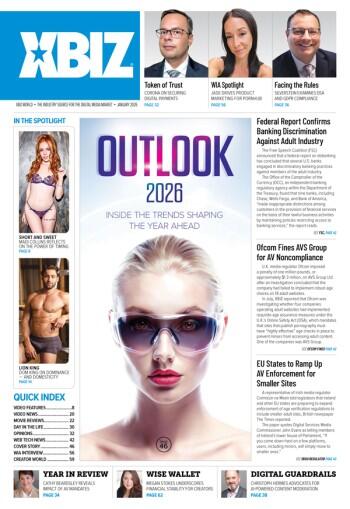You’ve probably heard of customer relationship management software, or CRM, but what exactly is it, and why is it so important to your adult business? Like many of you, I never paid much mind to CRM software. I figured I knew my customers, what they were into, how to market to them and how to convert traffic into sales. After all, if everything’s been working fine all of these years, why add another layer of complexity?
Well, here’s why: While CRM software does take a bit of effort on the front end to kick-start, once it is up and running, it will streamline many of your processes and interactions with your customers, and make the workload across the entire organization easier than ever. CRM software will also help you build and better retain a loyal customer base.
I am continually finding new ways to use and optimize the data we have, to offer our customers the best experience we can.
So, what does CRM software do that makes all of these outcomes possible? It can track what customers have purchased, it can link purchases — or groups of purchases — to kinks/fetishes, it can provide demographic information, a customer's lifetime value/purchase history and conversational history. It can tell you which promotions have or haven’t worked, how all of your marketing channels are performing, including which customers responded to each, and much more.
What makes this so special, then? The software you are using now may already track most, if not all, of this data already. The difference CRM software offers you is the ability to organize this data from all of the various sources, along with highly impactful communications with your customer. You will be able to communicate more personally with each of your customers, and cater to each of their individual interests as if you were talking to only them versus a mass audience … and it’s all done automatically.
Let’s use the example of a lingerie boutique. You have many different types of lingerie to offer — different materials, different styles, some sexy and revealing, some more modest, some for role-play, and the list goes on. CRM software will track what style of lingerie a customer purchased, what size they ordered and what category of “play” it falls into. So, when you receive your next shipment of new lingerie to the store, you can advertise only the types, styles and sizes that are relevant and interesting to that specific buyer. This will give you a higher conversion rate per customer with less spam mail getting to them, while keeping the content relevant will lower the chances of them unsubscribing.
In addition to offering the content most relevant to your existing customer base, CRM also helps move potential customers down the line from the “discovery” phase of your company to the “buyer” phase. All of those marketing dollars you have spent just to grab potential customers’ attention can now be more effective than ever with the use of workflows.
A workflow is essentially a marketing and relationship-building roadmap that customers follow. You can create different processes such as landing pages, forms, emails, offers, free downloads, time-sensitive deals and informational/educational material that is sent to the customer. Each item you wish to send to a customer is a touch point. These touch points should help you establish trust with your customer, and over time, build a relationship with them that will foster brand loyalty and repeat business.
Think of a workflow like the dating process. When you first find the person you wish to date, you start talking to them — this would be the inception of the workflow process. In the beginning, you don’t want to come on too strong. You ask them a few light and easy questions such as their name and where they’re from, eventually moving on to what they like to do, etc. During that process you are getting to know them and build more trust with them. You will continue to have more meaningful conversations until you can ultimately ask them out on a date and have a high likelihood of them saying yes.
Without a workflow process in place, you are marketing to potential "dates" and immediately asking them out, hoping they will say yes based on your image and bio. While you will hear some yeses in this scenario, you will hear far more noes. The workflow is put in place to romance the potential date and convert many of those noes to yeses.
And much like dating, no two conversations will be exactly the same, nor will any two customers’ journeys along the workflow. You can structure your workflows to work like a conversation with a potential date. You can map out a different path of touch points based on the customer’s responses to each interaction along the way. This will make the customer feel like you are catering to their specific wants and needs, rather than giving them a generic response.
Workflows and tactical marketing messages are only two of the great benefits CRM software offers. I am continually finding new ways to use and optimize the data we have, to offer our customers the best experience we can. The potential and capabilities of a powerful CRM tool are limited only by your imagination. I have been using CRM for my ecommerce store for several months now, and we have seen an immediate impact on our books since we deployed the strategies in this article.
Good luck, and make 2022 your best year yet!
Austin Madore is the founder and owner of Locked in Lust, a manufacturer of chastity devices. He believes ecommerce success is built through deliberate and consistent social media presence.








